-
Posts
6,117 -
Joined
-
Last visited
Content Type
Forums
Detector Prospector Home
Detector Database
Downloads
Posts posted by Chase Goldman
-
-
20 hours ago, Chase Goldman said:
The question is, will the coil be compatible with the Manticore.
 I was also hoping for an operating frequency of 5.82 kHz, but 5.83 is fine, I guess. Guess you have to keep your headphone plugged in to keep it IP68 compliant.
I was also hoping for an operating frequency of 5.82 kHz, but 5.83 is fine, I guess. Guess you have to keep your headphone plugged in to keep it IP68 compliant.
Seriously, though, nothing in the ML specs says it is IP68 compliant and it appears that only the coil is waterproof, ML should contact Amazon to correct the Amazon website spec listing or they are going to probably get some drowned detector returns.
-
The question is, will the coil be compatible with the Manticore.
 I was also hoping for an operating frequency of 5.82 kHz, but 5.83 is fine, I guess. Guess you have to keep your headphone plugged in to keep it IP68 compliant.
I was also hoping for an operating frequency of 5.82 kHz, but 5.83 is fine, I guess. Guess you have to keep your headphone plugged in to keep it IP68 compliant.
-
Bob,
Glad you healed up fast digging buddy. The rain today is going to further help with your digging ability. Those fields were turning into concrete. Congrats on the keyhole escutcheon and IHP. Not a bad “return” at all.
The problem with a “light” but strong shovel is that you lose the mass of the shovel distributed along the shaft that actually aids in digging because the force of gravity against that mass helps the blade penetrate and move the dirt better without having to exert as much muscle force. It can also supplement muscle power in leverage. I typically use all steel shovels for field work as a result.
-
I would suggest watching the British series program "The Detectorists". It was a humorous, but realistic take on metal detecting and what drives people to do it. It incorporated a quirky storyline based on finding a particular legendary treasure and other plot points (competition and tension between rival detecting clubs, interpersonal relationships, romances, and jealousies) but was also very realistic in some key essential aspects of treasure hunting: historical research and the complexities and nuances involved with obtaining/negotiating permission from the landowner to access private land that holds the promise of treasure. Incorporating the detective story type clues associated with doing prospective site research and the give and take aspect of obtaining permissions (e.g., what finds you may have to give to the landowner as compensation for site access) and ensuring that you do not stray from your permitted detecting areas (risking prosecution or personal injury) might provide additional realism and hold the interest of potential game players. FWIW.
-
14 minutes ago, iron_buzz said:
Where I do see that it may help a little is in showing areas that maybe we missed, but there are already apps out there that will map your path. Nothing new about that, and no subscription needed to use them.
I tend to agree, regarding the other tracking apps. But one thing this one does that the others don't is that it automatically records target IDs even for the targets you don't recover, so it makes a good tool for quickly surveying a site and automatically recording target hot spot areas. Unfortunately, GPS accuracy limitations may not be up to the task.
-
On 11/17/2023 at 12:49 AM, HardPack said:
You two do realize that the MD vendors don’t just give these detectors away in lien of fees to any old divorce attorney.
Yeah, I do realize that, that's why I mentioned "affordable" in my post.
Nokta has forced the market's hand such that cost is not an overriding concern if you want to have your cake and you want to eat it too.
The Legend whose features and performance rival both high end Equinox models and can be obtained for as low as $450, which is an incredible value. The forthcoming Nokta Score models will have both SMF and selectable single frequency capabilities for even less (but with less features and modes than Legend), driving cost down towards the most affordable selectable single frequency machine at the moment, the Minelab Xterra Pro at about $260. The price gap is rapidly shrinking...
Anyway, the rationale for why SMF over selectable single frequency (which I think is the gist of your hypothetical) was included in my post.
Anyway, the name of the game now as far as detectors are concerned is focused on versatility and value rather than specialized, expensive niche detectors. Keeping the end user, including beginning detectorists and those who want to make a minimal investment without sacrificing capability, from having to make the choice in your hypothetical.
-
2 hours ago, HardPack said:
Since I have failed to find a Minelab definition for “Iron Bias” I am assuming Iron Bias filters the detector’s incoming return signal based on the purity of the signal. At Iron Bias setting 0 all signals pass through the filter regardless of purity or iron contamination; at setting 9 only the purest cleanest signals pass through the filter.
Iron Bias is not a pass/no pass ferrous filter, that's what disc is for. In an overly simplistic view (because all I have are my observations, as ML has failed to explain it in a meaningful way to the end user), Iron Bias takes a target that has both ferrous and non-ferrous attributes and emphasizes the ferrous attributes (TID and audio) depending on how much Iron Bias you apply. Iron Bias requires multifrequency to do its "magic" (so it is not present when in single frequency) and like all these signal processing tricks, it's imperfect and can be fooled into making non-ferrous sound/ID as ferrous if set too high or will not quiet falsing on big iron if set too low.
The following thread has some thorough and thoughtful discussion on iron bias. It's Equinox 600/800 based but the fundamentals apply to the 700/900 as well. It's not clear whether ML incorporated the Fe or F2 iron bias filter into the 700/900 or a third variant. I suspect they further refined the F2 filter. Note also that 0 doesn't necessarily mean that no iron bias filtering is being applied (vs. single frequency which definitely does not have an iron bias filter).
-
Assuming you are referring to Long Range Locators, I can’t recommend a good one because they are all pretty much scams.
Read the information below to become more enlightened on these devices…
-
5 hours ago, TampaBayBrad said:
If more of us would not choose to keep our location top secret in our profiles, things like this coin misunderstanding could be avoided. Not calling you out KDX, just wondering in general why members don't want to list their location. Afraid someone will try to claim a find that was posted? Afraid someone will move in and compete? I'm not sure......I guess there are reasons because so many locations are blank. Just a state would be nice.
The profile location information would be helpful, but I understand why people are not keen to share too much personal information in a persistent/static online profile tied to a specific user name where it can be more easily scraped by data miners and bots. So I don't fault KDX for that. So I think it's more about personal privacy than metal detecting location privacy.
However, that being the case, I would hope that KDX would realize that the average reader would have no idea he is talking Canadian coinage and would therefore be a little more forthcoming with such relevant information sooner, preferably in the title of the thread, so he could get better responses and attract those who have more experience detecting Canadian or other similar steel clad coinage. Perhaps Clive @cjcor Dave @midalake with his Mexican coin experience can chime in here and help out.
As a moderator, I also took the liberty of updating the thread title to explicitly ID Canadian Steel Clad coinage.
@KDX, let me know if this change to your thread title is helpful or not.
-
The answer is “it depends on the situation” (in a nutshell, I am mostly running SMF because of the advantages associated with more stable operation across a variety of soil/sand/salt/water conditions and more stable IDs, but like the option to switch to SF due to EMI conditions or when focused on a narrow target conductivity window). And since fortunately there are at least 10 “mainstream” detector models (some at very affordable price points) that give you both SMF and switchable single frequency (Garrett Apex, Minelab Nox 600, 700, 800, and 900, Minelab Manticore, Nokta Legend, XP Deus 2, and the two latest Quest models), I fortunately don’t have to make that choice and am not forced to ponder this hypothetical. In other words, I no longer give consideration to detectors that don’t have both multiple SMF modes and selectable multiple frequencies The fact that the coil frequency options of these real detectors don’t exactly line up with or encompass the entire range and discrete frequency settings you arbitrarily listed, makes little, if any, difference (i.e., the fact that 7, 18, 50, and 60 kHz are absent on most of these detectors, makes little difference in performance IMO). Maybe someone will give you a more thoughtful answer. I’m inherently lazy.

-
OK. So are you talking about Canadian Steel Clad coinage? That is a whole different ball game. I have no expertise on how to detect those or how recovery speed might affect detector response for steel clad coinage or what the IDs will look like. It's a real challenge.
-
13 hours ago, HardPack said:
General Question:
With any detector including the ML Equinox 900, if you are detecting in an "All Metal" search mode, why would there be a need for feature such as "Iron Bias" for any setting at lower 0-4 or higher 5 -9?
Not exactly understanding your question. Iron bias works the same way regardless of whether you are in "All Metal" mode (- though this is more accurately described as "No Discrimination" mode as true "All Metal" mode means that there is no filtering or processing applied and you are getting the raw unprocessed target signal). So operating in All Metal does not change the purpose for having Iron Bias, as Iron Bias changes the way both ferrous and non-ferrous targets are ID'd by the detector whether or not you are in All Metal. Being in All Metal just allows you to hear the targets that ring up as iron. All that Minelab is saying is to be cautious about applying too much IB as you may cause small non-ferrous to sound off as ferrous (which you will hear only in "All Metal") or too little in which case you will get more big ferrous edge falsing and nail head falsing that you will hear regardless of whether or not you are in all metal.
19 hours ago, HardPack said:Okay, in either of the Field search mode 5-Tone Volume ranges from 4, 25,25,25,25 but the tone pitch ranges is 1, 6, 12, 18, 25.
Yep, I looked at the wrong column.
-
57 minutes ago, KDX said:
@ Yatahaze323 What is considered mineralized soil? When I ground balance it here it's usually in the 20-24 range.
Unfortunately, the ground balance reading doesn't tell you anything about how mineralized your soil is. Minelab inexplicably does not include mineralization meters on their detectors to help you determine this. Suggest (re-?)reading the responses to your post when you last brought this up to get a better idea of the difference between ground mineralization which affects Target ID accuracy/depth and ground phase balancing which zero's out the conductivity effects of the ground to minimize spurious ground signals in the ferrous region. To determine how mineralized you ground is, you need to find someone with a detector like a Deus/Deus 2, Simplex or Legend, or Fisher F70/75 which have mineralization meters, to determine if your soil mineralization level is high and how that might be affecting what you are seeing in your test garden.
-
Hard to draw conclusions without additional details about your setup. How far apart were the coins spaced? Soil mineralized or neutral? Is EMI a factor? Were the coins all high conductors or were there nickels and zincolns too? Specifically, which "few" coins were difficult to ID at recovery 3. What was your sensitivity set at? Maybe you were overloading with sensitvity set too high which is known to cause instability. Etc...
-
57 minutes ago, HardPack said:
Knowing that the majority of targets were iron, the detector’s low volume target response to threw me a curve. In one of the field discrimination modes passing the coil over a iron target the TID jumped from around 5 to the mid to upper teens. Switching to the horseshoe “all metal’ mode verified the targets were iron. Upon review of the manual default settings for the search modes the “tone volume” settings are “4,25” for both field #1 and field #2 search modes.
This is what I am assuming: the low tone and lower positive TID response is caused by the non-ferrous components within the larger ferrous target(s); the low volume response is due to the default tone level of “4” of the Tone Volume setting “4,25”. The what?
What you are missing is that when you switched to 5 tones, the 2-tone/All Tone default volume settings of 4,25 no longer apply. Look at the 5-tone default volume settings on the next set of default tables to get an idea of the default volume settings for each of the 5-tone regions (i.e., 12, 25, 25, 25, 25). You will not hear the first tone (iron) region (i.e., TID 4 and below) unless you accept all regions using the horseshoe button. Without horseshoe, you are likely hearing the big iron edge falsing in the 5 to 25 TID tone region at full 25 volume and a pitch of "6" vs. the ferrous region which is either silent or with horseshoe at volume 12 and pitch 1.
If you want to take the ferrous falsing edge off, so to speak, then reduce sensitivity no higher than necessary (the 900 is hot/sparky and you get better TID stability and less ferrous "reactivity" with minimal depth loss penalty by adjusting sensitivity to around 17-20, the start adjusting iron bias upwards from 0, as necessary, to get mostly pure iron tones out of those test targets. The tradeoff with higher iron bias is that some small non-ferrous may (and I emphasize "may" as I have never witnessed a non-ferrous target IDing as ferrous with higher Iron Bias settings) get an iron tone component. I personally think this iron bias "penalty" is worth it unless you are going for micro gold or brass targets. Increasing recovery speed can also lessen reactivity to iron targets. HTH.
-
Get well soon, my friend.
-
If you are after relics in mineralized soil, the Axiom punches as deep as the now discontinued GPX 5000. I sold my GPX 4800 once I proved this for myself on a couple of multi day relic outings.
The compact form factor and ergonomics do not limit the Axiom's power or depth capabilities vs. the discontinued GPX legacy machines. This is further demonstrated by Minelab's light and powerful GPX 6000 PI, but exorbitant cost, demonstrated reduced quality control, lack of a ferrous check/blanking feature, and overly automated controls made the Axiom the better choice than either the GPX 4800/5000 or GPX 6000 for me as a relic hunter. A gold hunter might have a different opinion regarding small gold performance on Axiom vs. GPX 6000, but that is not my area of expertise, and from what I understand, the performance difference, if any, is small and subject to debate.
@Steve Herschbach has made it abundantly clear in numerous posts regarding his experiences in helping to develop and test Axiom, that power and depth performance vs. the legacy GPX machines (i.e., pre-GPX 6000), there is practically no performance difference.
Suggest doing a deep dive here searching on Axiom and Steve's user name. Good luck.
-
51 minutes ago, Steve Herschbach said:
I'm a fairly proficient cherry picker with a PI detector just by reading the tonal responses. IAR is a way to try and replicate in electronics what a person like me is doing with their ears. Most round targets and most non-ferrous targets produce different signals than most ferrous targets. Not all by a long shot, but enough to sway the odds in your favor.
Exactly. To piggy back on this; non-ferrous, symmetric targets at depth usually (but there are always exceptions) change tonal pitch in a smooth manner whereas small and large non-ferrous change pitch in a more abrupt or "unstable" manner even if the pitch change amplitude is the same. A smooth valley or hill vs. a more abrupt pit or pinnacle. That is our brains interpreting the different time varying pitch and amplitude changes and rates. Using the Axiom which uses "on demand" ferrous checks vs. continuous ferrous blanking. I can pretty much tell by the abruptness of the target signal audio changes in pitch and volume amplitude whether I am likely over ferrous and engaging the ferrous check just sort of provides a confirmation. Then I still need to make a dig decision because none of this is 100% foolproof and factors such as the local junk you have previously dug, the junk density factor, your fatigue factor, and hunches that will come into play. This is all integrated in your head in real time, and if you have done it long it enough it becomes second nature without you realizing you are doing it. You just do it.
-
16 minutes ago, F350Platinum said:
Thanks Doc,
Well yes... And no. 😀 While one find proves Colonial activity and others are in line with the family that has owned this place since, it's like another of my permissions that has to be thoroughly checked for hot spots. This farm was apparently not a center of social activity or much to do with horses, which signal better finds like buttons, old jewelry, and coins.
If my suspicion is correct it was cherry picked for all the easy silver coins, so finding iron patches and digging some of it out will be de rigueur. 😅 From the date on the 2¢ piece it would indicate a probability for at least a Trime, a very difficult coin to find.
100 acres might not seem like much, but you're talking 4 million square feet 🤔
Exactly. We'll be back because we only scratched the surface. It needs more surveys and crossing across the heart of the site to see if something is being overlooked. It's not super promising because of the cherry picking and the lack of obvious "social" uses. But as Bob has found on other sites, if they were really good cherry pickers then that 2c piece should not have been left in the ground nor the Largie I found and the multiple silvers Bob found at one of the other so-called "cherry picked and pounded sites". It not probable Bob found the only bucket lister that was left on a 100 acre site. There is a site we keep going back to because it is historic and we have hunches that it will produce though we have crisscrossed it several times without a lot to show for it. But last time we were there it coughed up a silver quarter spill in an area we had detected several times before. How does that happen? Bottom line, it is rare that we totally give up on a site until we are just fed up with it or have that sixth sense that it is not going to happen.

-
8 hours ago, iron_buzz said:
Which brings me to another, related question... Gold and Relic in the D II use Iron Amplitude Rejection instead of tradititional discrimination (although notching is still available, which I use often with those programs to make them useable). The idea, if I understand it right, is to reject ferrous targets with the highest magnitudes. I have wondered it it would also be possible to apply that same logic to non-ferrous targets for detecting in places where you want to ignore shallow coins and pulltabs and such so you can focus on the deep targets. Of course, it would have to be used with the caveat that you could be missing important stuff on the surface but there are situations where that might be OK. Is my thinking sound? Could and should this be done?
The short answer to your question is: Probably not.
TL/DR version:
I am speculating here, because I don't have insider knowledge of XP's implementation of IAR but I can make some semi-educated guesses of what's going on. My understanding is that what IAR is doing is differentiating the rate of the target's amplitude change (i.e., how fast it reaches its maximum amplitude) vs. the reactive (X) based phase change (which is what is used to determine TID) to separate ferrous from non-ferrous targets. Put another way, but greatly oversimplified, ferrous target signal amplitudes peak at a different rate than non-ferrous targets and you can use that characteristic to ID ferrous beyond the phase shift TID method that is typically used in discrimination or more sophisticated notch implementations. So, my limited understanding (which could be mistaken) is that it is not based on the max amplitude but how quickly it reaches max amplitude. Geotech can confirm or refute whether this is a real thing but I believe this characteristic is also used by pulse induction detectors to crudely differentiate ferrous from non-ferrous targets. On PI detectors it can be fooled by strong shallow targets that result in a strong amplitude response and it also can be fooled by highly mineralized soil conditions, because of the ferrous composition of the mineralization (magnetite or maghemite). On the Deus/Deus 2, I have not seen IAR be fooled by strong shallow targets but I have certainly seen it struggle in highly mineralized ground conditions, especially in the Deus 1 implementation. It seems that XP has refined IAR significantly in Deus 2, but it is still not as reliable as traditional discrimination and it is essential that Notch 00 is used in conjunction with it in Relic and Gold Field modes to eliminate ground feedback at 0 TID and below (which is also explicitly noted by XP in the Deus 2 manual snippet below that describes notch). Non-ferromagnetic metals do not exhibit significant temporal (time varying) peak magnitude effects in a manner that would enable differentiating between various non-ferrous metals, so it cannot be used other than as a means to crudely differentiate ferrous from non-ferrous, from what I can tell.
So that just leaves disc/notch for undesirable non-ferrous targets and the caveats associated with using those filters as desirable targets will invariably be occasionally filtered out as well.
I have recently detected some sites heavy in aluminum trash, and the only other tool I have found to have some use is the AUDIO FILTER setting. Setting AF to high settings tends to give aluminum and other light junk metals a kind of "brassy", distorted audio, especially when full tones audio is used and the effect varies when using PCM vs. Square vs. Hi-Square audio, as well. I tend to interrogate a suspected aluminum target by switching to a custom full tones program that I have set up adjacent to my preferred main search mode (which is either Relic or General, depending on site conditions and target objectives). But it usually just sets my expectations, accordingly (i.e., low), but I seldom use it solely to make a dig, no-dig decision because, it is also far from foolproof.
Most of the above is empirical field experience rather that theoretical. I tend to try to not overthink it too much and just get out there and dig all the non-ferrous and much of the iffy ferrous to get a feel for the type of junk at a particular site and until I get tired or worn down and then I will start to cheat with the filters and audio tools.
I haven't really seen anyone refer to the XP Deus 2 manual in this thread, so I thought it would be helpful to use XP's own words against them.

Below are excerpts from the Deus 2 manual describing the various filters like Discrimination, TID, B Caps, Notch, Multi-Notch, Silencer, and IAR, its limitations, how it is designed to either provide awareness of small shallow ferrous or deep big ferrous (though I have not really seen it do this in practice, I typically just set IAR at 5 as it gives the highest "grunt" response on ferrous regardless of depth or footprint - and run Relic as basically a "two-tone" ferrous/non-ferrous setup with Target ID).
A couple things to note in the snippets below:
XP describes Notch as a supplement to Discrimination. The reason being is that Discrimination utilizes Iron Volume and if you use notch instead in the lower TID regions, you basically "lose" a tone region if you don't utilize any disc when using multi-tones. You can use this to your advantage, but if you are unaware of this distinction, it can also be a downside.
Notice how XP describes the 23 - 24 notch on the Sensitive, Sensi FT, and Fast programs as a means to reject soil "wet zones". I always thought is was for foil.
XP says IAR can result in rejection of lower conductivity desirable targets such as gold nuggets, so use it with caution and also notes that notch can be used in conjunction with IAR.
-
Agree with what Jeff said on relic detecting and timbus59 on Axiom discrimination. I use Axiom in highly mineralized, red Virginia clay and have about 100 hours on it. I previously owned a GPX 4800 and an ATX before that. I am glad I made the switch to Axiom from the GPX. The ergonomics and straight forward setup are such that I would consider using it even in mild dirt conditions where the depth advantage is not as great. Regarding the implementation of iron rejection, I prefer the “on demand” iron check approach rather than the continuous iron blanking, though the GPX iron blanking might have an ever so slight advantage when it comes to identifying iron at slightly deeper depths. Both are subject to false positives, I.e., buzzing or blanking on non-ferrous targets so you can never put full faith in them 100% of the time. You need to integrate what iron check is telling you with the unfiltered target audio characteristics and then make a dig call (or just dig every target if you want to be 1000% certain). I find that the Axiom may hold the edge when it comes to non-ferrous “confidence”. By that I mean that if the Axiom does not buzz on a strong (shallow) target, very high confidence it is non-ferrous.
Ground balancing is easy and you can even use it (with caution) to balance out hot rocks and even shallow square nails (see @Steve Herschbach’s various Axiom tips and tricks posts and videos).
I love the stock DD and opted to add the smaller DD coil vs. the small mono that is included in the US kit.
The integrated Z-Lynk wireless works well.
If I were going to ask for a tweak, it would be enable a way to manually select/adjust the operating frequency channel on the fly vs. having to go through the entire channel scan again should you run into interference after you initialize GB and frequency at the beginning of your hunt.
Overall, I have no regrets going to Axiom for hot dirt relic detecting. See below for some of my Axiom finds.
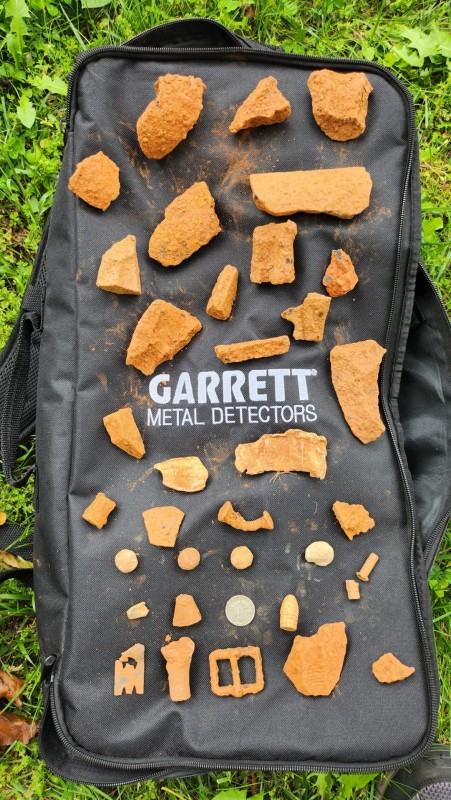
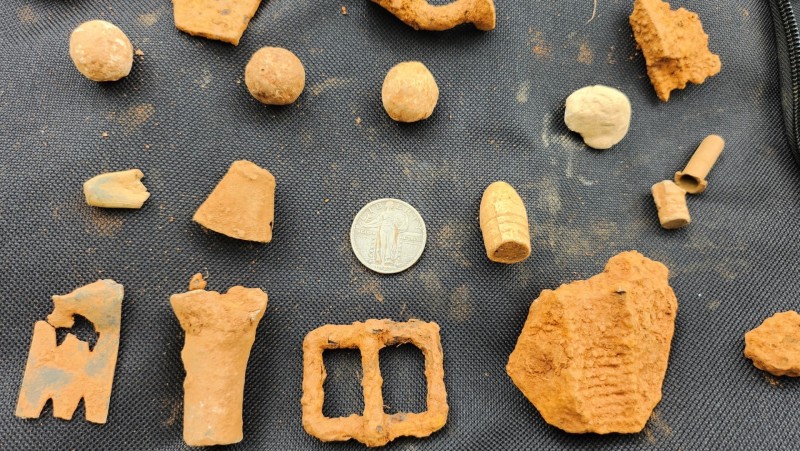
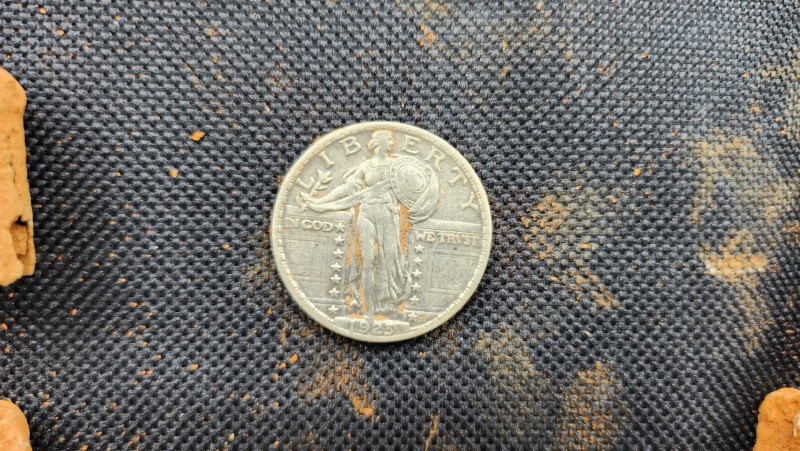
-
On 10/31/2023 at 9:35 PM, Coiltek said:
HI Chase, happy to contribute where I can...
Manticore coils.... maybe!
What sizes do you think are missing in the current line up?
Trev
The Manticore equivalent of the Coiltek Nox 10x5 would be at the top of my list.
-
17 hours ago, Dug D said:
the M8 doesn't look very light
Compared to what, the 6" round on the Nox?
17 hours ago, Dug D said:I spend most all my time in grass
That must be nice vs. the concrete clay I'm used to.
-
17 minutes ago, Coiltek said:
Hey All - some great discussion here on the 'Why' of another coil option... and of course there are those that see the purpose and have the need and those that are OK with what they have and you know that is super fine with us.
This coil was brought to market due to a large amount of requests from different regions in the globe for a large coin and treasure coil. So essentially we researched the idea of a big coil and how it would work and where it may suit, discussed it with Minelab and they also saw that it will fill a gap, ran the prototypes and field trials and here we go - the 18" NOX.
Coiltek has always filled gaps for gold and treasure hunters with the Minelab detectors and they all have their purpose. We liken it to a golfer with his/her kit of clubs... each has a purpose and a strength for the right shot. Some you wouldn't use in certain situations as it would be a waste of effort and be frustrating. Sometimes you would go to a course and not even use a certain club, but you know its there if you need it. Like myself (try hard golfer) I like having the kit and and stuff that a golfer needs but will only use a club when I feel confident it will do a job that I want and I know what will work in certain situations.
The 18" is this type of coil you have in the kit for a specific need and the terrain that will allow it to swing well and free of obstruction. Deep treasure, coins or relics would be its forte with the smaller jewelry and coins needing to be closer to the surface to be picked up. Yes this coil is not made for sensitivity even though its good for its size, the smaller coils are best for the shallower smaller targets in general as most would expect. Our UK tester found several Danarius coins at over 18" deep on ground he had searched before with all types of detector and coil combos (even manticore) and the 18" NOX and GPX5000 with our 18" ELITE were the only ones to get more targets.
We are realistic...
We know its not going to be a coil for everyone - that's OK but for those that use it it will perform well
We know the coil is heavier due to its size and epoxy resin filling - but it is robust and can take some serious prospecting
We know most will use it with a detecting harness to help with the weight - plenty to choose from on the market
We know certain regions love big coils - Middle east, UK, Europe and Asia but maybe not US, AUST or some EURO countries
We know it will be a deeper searching coil than the 15"NOX with larger targets - the bigger the target the more depth gain
The whole Coiltek team are excited to release this coil and hope it will benefit a bunch of enthusiasts and professionals who believe this coil will suit their specific detecting needs. Once it is in the market I am sure there will be several reports and videos being released so others can see how it operates. I am always super nervous and anxious at any new coil release... and also very excited to see how it goes. We have done our best to get it right and now its up to us to prove we can replicate the performance with every coil.
Trev @ Coiltek
Trev
Thanks for posting here on DP. Any chance that you can comment on the possibility of Coiltek offering some Manticore compatible coil offerings in the future? Thanks.
Chase - Moderator



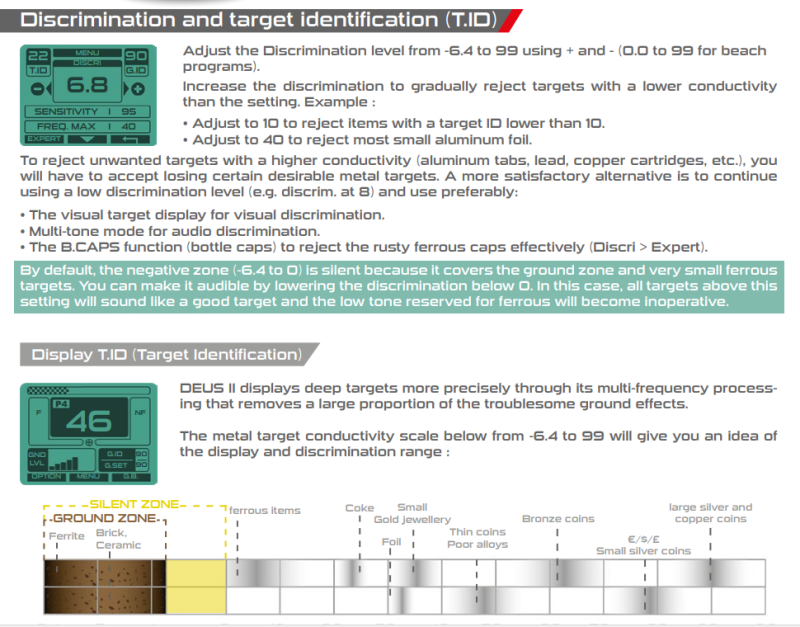

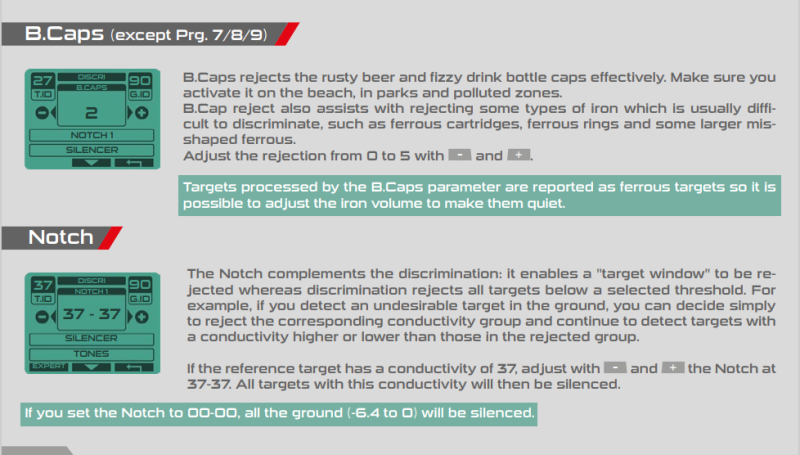
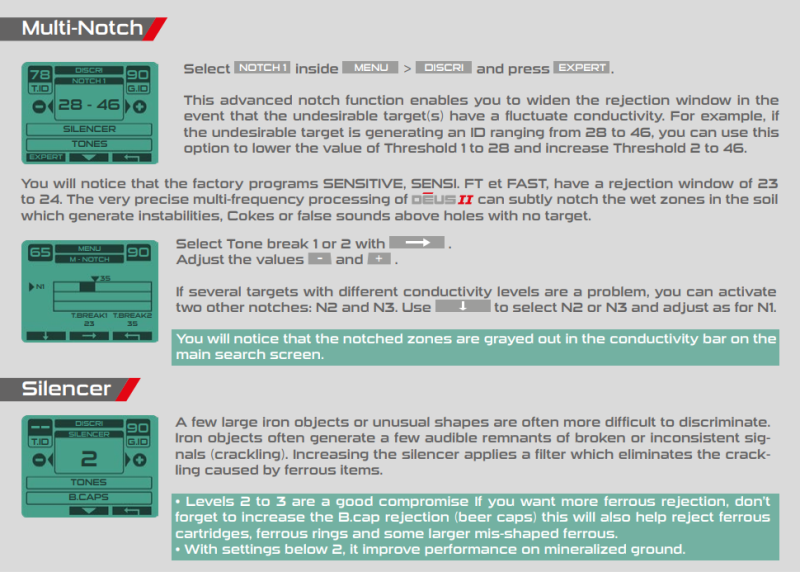

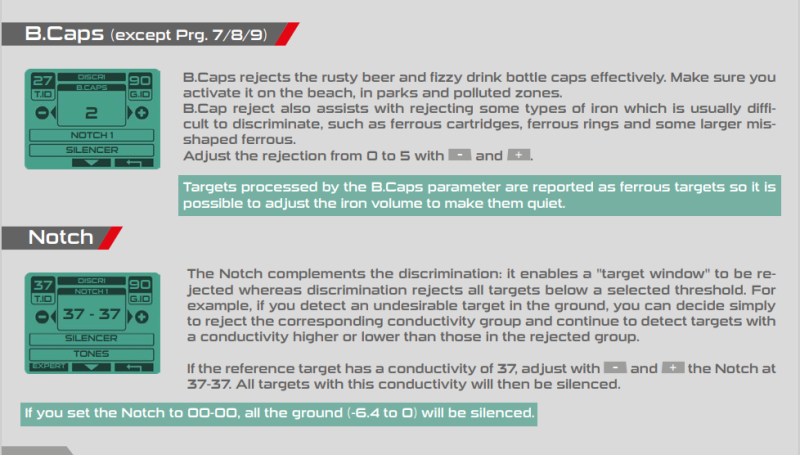
New Minelab X-Terra Voyager
in Minelab X-Terra Forum
Posted
Sunpow has a Concentric coil vs. the DD on the Voyager...interesting